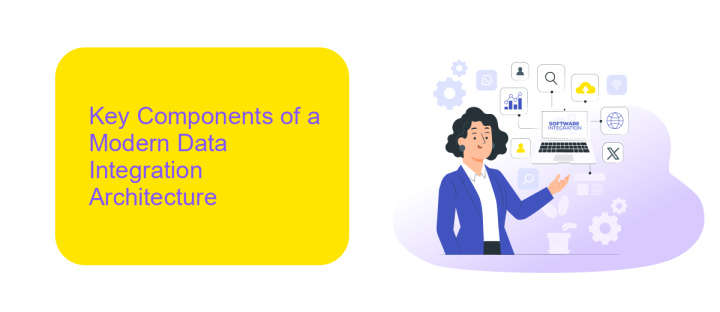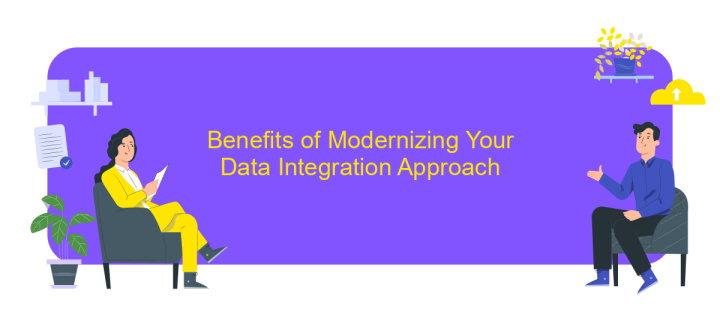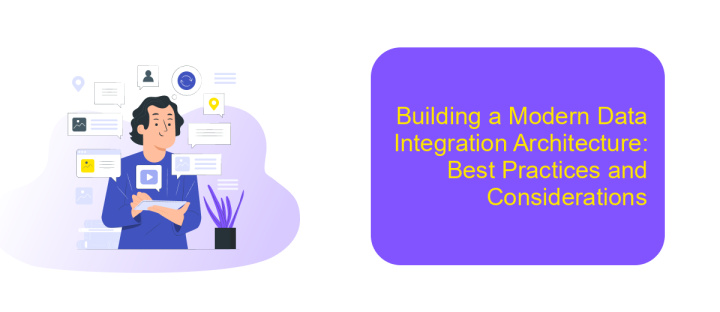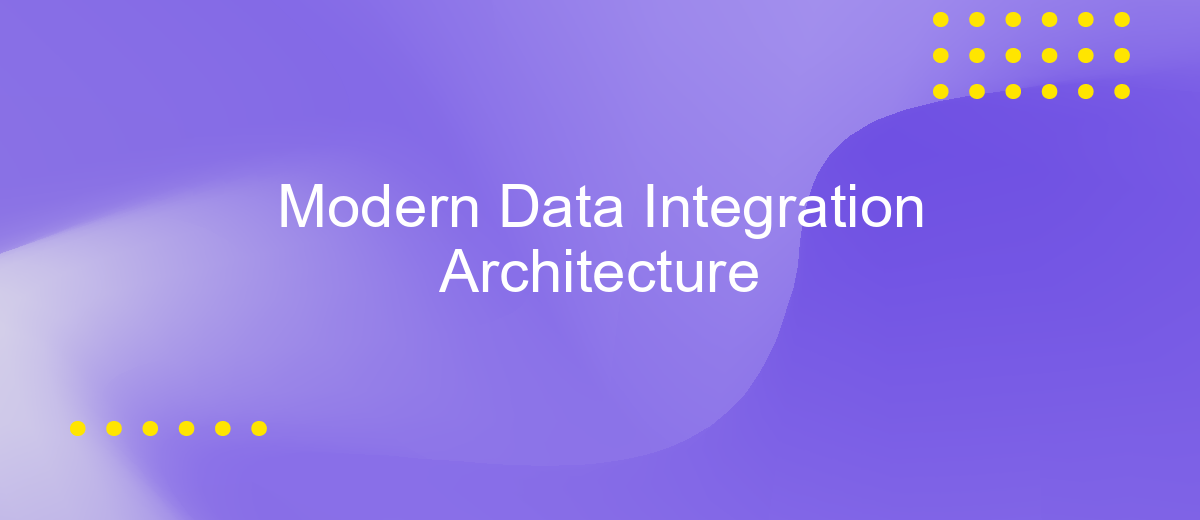Modern Data Integration Architecture
In today's rapidly evolving digital landscape, modern data integration architecture has become a cornerstone for organizations striving to harness the full potential of their data assets. By seamlessly connecting disparate data sources, this architecture enables real-time insights and informed decision-making. As businesses increasingly rely on data-driven strategies, understanding and implementing effective data integration solutions is crucial for maintaining a competitive edge and fostering innovation.
Introduction: The Evolving Landscape of Data Integration
In today's rapidly evolving digital landscape, data integration has become a critical component for businesses aiming to harness the full potential of their data assets. As organizations generate and collect vast amounts of data from diverse sources, the need for a robust data integration architecture has never been more pressing. This architecture not only facilitates seamless data flow but also ensures data quality, consistency, and accessibility across the enterprise. The journey from traditional data integration methods to modern architectures reflects the dynamic nature of technological advancements and business needs.
- Increasing volume and variety of data sources.
- Growing demand for real-time data processing and analytics.
- The rise of cloud-based platforms and services.
- Emphasis on data governance and compliance.
As these factors continue to shape the data integration landscape, organizations are compelled to adopt innovative solutions that can address the complexities of modern data environments. This evolution is characterized by the adoption of scalable, flexible, and efficient architectures that support a wide range of data integration patterns. By embracing these advancements, businesses can unlock new insights, drive innovation, and maintain a competitive edge in the data-driven economy.
Key Components of a Modern Data Integration Architecture

A modern data integration architecture is built upon several key components that ensure seamless data flow and accessibility. One of the primary components is the data integration platform, which acts as a central hub for connecting various data sources, transforming data, and ensuring its delivery to target systems. These platforms often support a variety of integration patterns, including ETL (Extract, Transform, Load), ELT (Extract, Load, Transform), and real-time streaming, to accommodate diverse data processing needs. Additionally, they provide robust data governance and security features, ensuring that data is handled in compliance with regulatory standards and organizational policies.
Another crucial component is the use of APIs and integration services, such as ApiX-Drive, which facilitate the automation of data workflows and enable seamless connectivity between applications. These services offer user-friendly interfaces and pre-built connectors, significantly reducing the complexity and time required to set up integrations. By leveraging such tools, organizations can ensure that their data integration architecture is agile and scalable, capable of adapting to evolving business requirements and technological advancements. This approach not only enhances data accessibility but also empowers businesses to make data-driven decisions with greater efficiency and accuracy.
Benefits of Modernizing Your Data Integration Approach

Modernizing your data integration approach offers a multitude of advantages that can significantly enhance your organization's data handling capabilities. By transitioning to a contemporary architecture, businesses are better equipped to manage the increasing volume, variety, and velocity of data, ensuring seamless operations and strategic decision-making.
- Improved Efficiency: Modern tools automate data processing, reducing manual intervention and minimizing errors.
- Scalability: New architectures are designed to grow with your business, accommodating larger datasets and more users without compromising performance.
- Enhanced Data Quality: Advanced integration solutions provide real-time data validation and cleansing, ensuring that decision-makers have access to reliable information.
- Cost Reduction: By optimizing data workflows and leveraging cloud-based solutions, organizations can significantly cut down on infrastructure and maintenance costs.
- Agility and Flexibility: Modern systems support a wide range of data sources and formats, allowing for quick adaptation to changing business needs.
Incorporating modern data integration strategies not only streamlines operations but also empowers businesses to harness the full potential of their data assets. This transformation is crucial for maintaining a competitive edge in today's fast-paced digital landscape, enabling organizations to innovate and respond swiftly to market demands.
Building a Modern Data Integration Architecture: Best Practices and Considerations

In the rapidly evolving landscape of data integration, constructing a modern architecture requires careful planning and strategic execution. The foundation of a successful data integration strategy lies in its ability to seamlessly connect disparate data sources, ensuring data is accessible, accurate, and timely. Emphasizing scalability and flexibility is crucial, as organizations must adapt to growing data volumes and evolving business needs.
To build an effective data integration architecture, organizations should prioritize the use of cloud-based solutions. These platforms offer enhanced agility, allowing for easier scaling and real-time data processing. Furthermore, leveraging API-driven integration facilitates smoother connectivity between applications, enabling efficient data exchange and reducing latency.
- Adopt a modular approach to design for future scalability.
- Implement robust data governance and security measures.
- Utilize automation to streamline data pipelines and reduce manual intervention.
- Incorporate real-time analytics to derive actionable insights swiftly.
Ultimately, the success of a modern data integration architecture hinges on its ability to meet the organization's current and future data needs. By adhering to best practices and continuously evaluating emerging technologies, businesses can ensure their data integration framework remains resilient, efficient, and aligned with strategic objectives.
Future Trends in Data Integration
As we look toward the future of data integration, one of the most significant trends is the increasing reliance on artificial intelligence and machine learning. These technologies are poised to revolutionize how data is collected, processed, and analyzed, enabling more efficient and accurate integration processes. AI-driven tools can automate data mapping, error detection, and data transformation, reducing the need for manual intervention and allowing organizations to focus on strategic decision-making. Furthermore, the rise of cloud-based platforms continues to facilitate seamless data integration across disparate systems, breaking down silos and promoting a more cohesive data ecosystem.
Another emerging trend is the growing importance of real-time data integration. As businesses demand more immediate insights, the need for instantaneous data processing becomes critical. Services like ApiX-Drive are at the forefront, offering solutions that simplify the integration of various applications and systems in real-time. By providing a user-friendly interface and robust automation capabilities, ApiX-Drive empowers organizations to streamline their operations and respond swiftly to market changes. As technology advances, these trends will undoubtedly shape the future landscape of data integration, driving innovation and efficiency across industries.
FAQ
What is Modern Data Integration Architecture?
How does Modern Data Integration Architecture differ from traditional methods?
What are the key components of a Modern Data Integration Architecture?
How can businesses benefit from implementing Modern Data Integration Architecture?
What tools can be used to automate data integration processes?
Apix-Drive is a universal tool that will quickly streamline any workflow, freeing you from routine and possible financial losses. Try ApiX-Drive in action and see how useful it is for you personally. In the meantime, when you are setting up connections between systems, think about where you are investing your free time, because now you will have much more of it.

